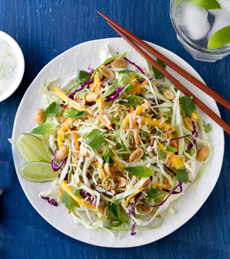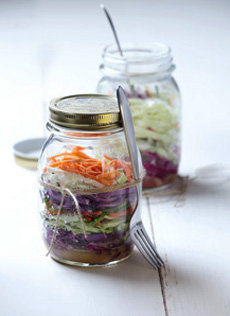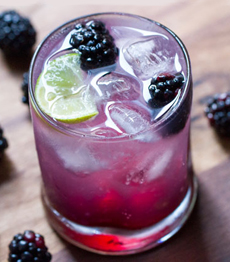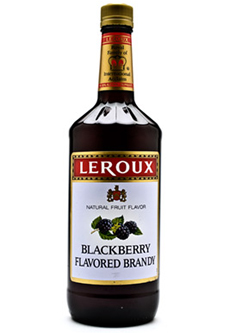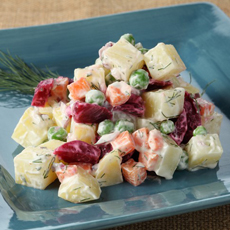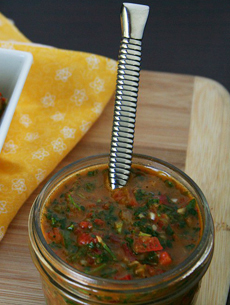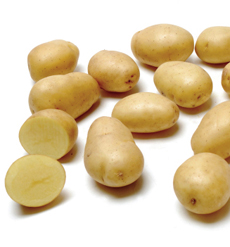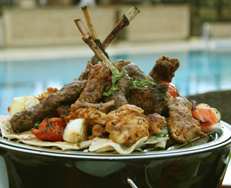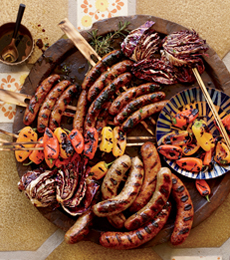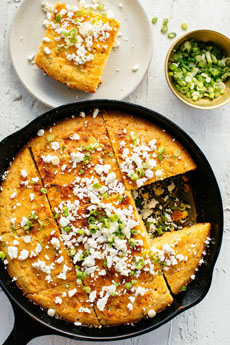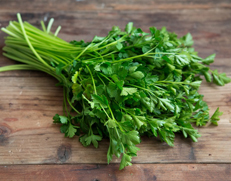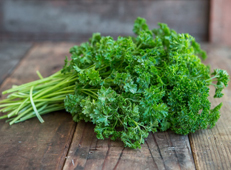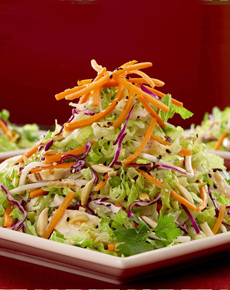
[1] Vietnamese slaw, made with a fish sauce-accented vinaigrette (photo © The Cheesecake Factory.

[2] Conventional American cole slaw with mayonnaise (photo © Blu Restaurant | NYC [alas, now closed]).
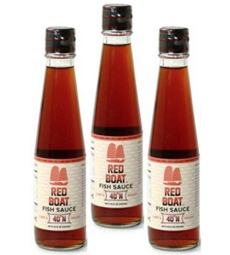
[3] Vietnamese fish sauce (photo © Red Boat).
|
|
So many slaws, so little time! On summer weekends, we try different slaw recipes and different potato salads.
When made without mayonnaise, cole slaw is a very low-calorie food, and cabbage is an antioxidant-packed cruciferous vegetable. That’s what you’ll find in the Asian-style slaw recipe below.
Today’s tip also highlights a relatively unfamiliar ingredient to Americans, fish sauce. But first:
WHAT’S A SLAW & WHY IS IT “COLE?”
Long a part of the culinary repertoire, “koolsla,” short for “koolsalade,” means cabbage salad in Dutch; Dutch travelers to the New World made the dish with local cabbage. Instead of being torn into bite-size pieces like lettuce salad, the cabbage was thinly sliced or shredded.
Cabbage, the “kool,” is pronounced “cole.” “Sla” is short for “salade.” The term got anglicized in the 18th century as cole slaw (and sometimes, cold slaw).
In English, “slaw” came to specify a salad of shredded vegetables. Over time, shredded cabbage slaw was joined by carrot slaw and more recently, broccoli slaw and shaved Brussels sprouts slaw.
WHAT IS FISH SAUCE?
Called nam pla in Thai and nuoc mam (“salted fish water”) in Vietnamese, fish sauce is an amber-hued condiment prepared from fermented anchovies and salt. An umami flavor lauded as “the fifth taste” after sweet, sour, bitter, and salty, fish sauce is a major ingredient and condiment in Thai and Vietnamese cuisine.
Numerous brands are imported to the U.S., including Red Boat Fish Sauce.
Umami, The Fifth Taste
Fish sauce provides a flavor known as umami, often explained as savory or brothy.
We consume “umami foods” every day: anchovy paste, asparagus, beef stew, bouillon, cured ham, ketchup, lamb shank, miso sauce and soup, MSG, mushrooms, Parmesan cheese, ripe and sun-dried tomatoes, soy sauce, steak sauce and Worcestershire sauce, among others.
European Garum & Colatura Di Alici
Umami and fish sauce are also part of Western culture. Beginning in Greece and appearing in nearly every ancient Roman recipe as early as the 7th and 8th centuries B.C.E., garum, a fermented fish sauce, was the universal condiment used to add flavor to food.
As ketchup (and more lately, hot sauce) is to American fare, as soy sauce is to Chinese cuisine, the favorite condiment in ancient Rome was garum, an anchovy sauce. It involved into colatura di alici, juice of anchovies, still popular in Italy. It’s also called anchovy sauce or anchovy syrup; the latter is inaccurate, as a syrup is a thick, viscous liquid.
As strange as “anchovy juice” may sound, colatura is an aromatic condiment that enhances any dish, adding flavor without fuss.
|



